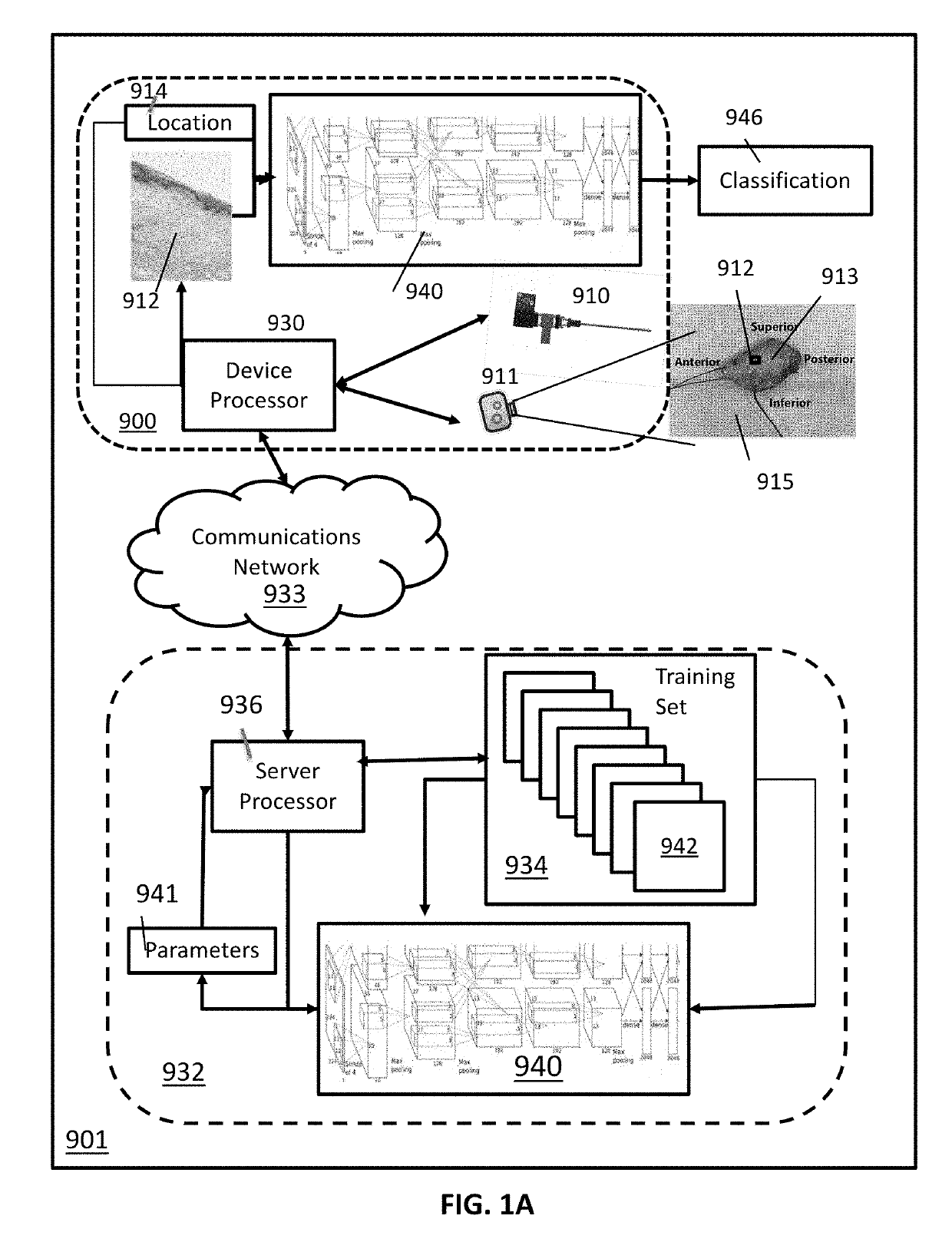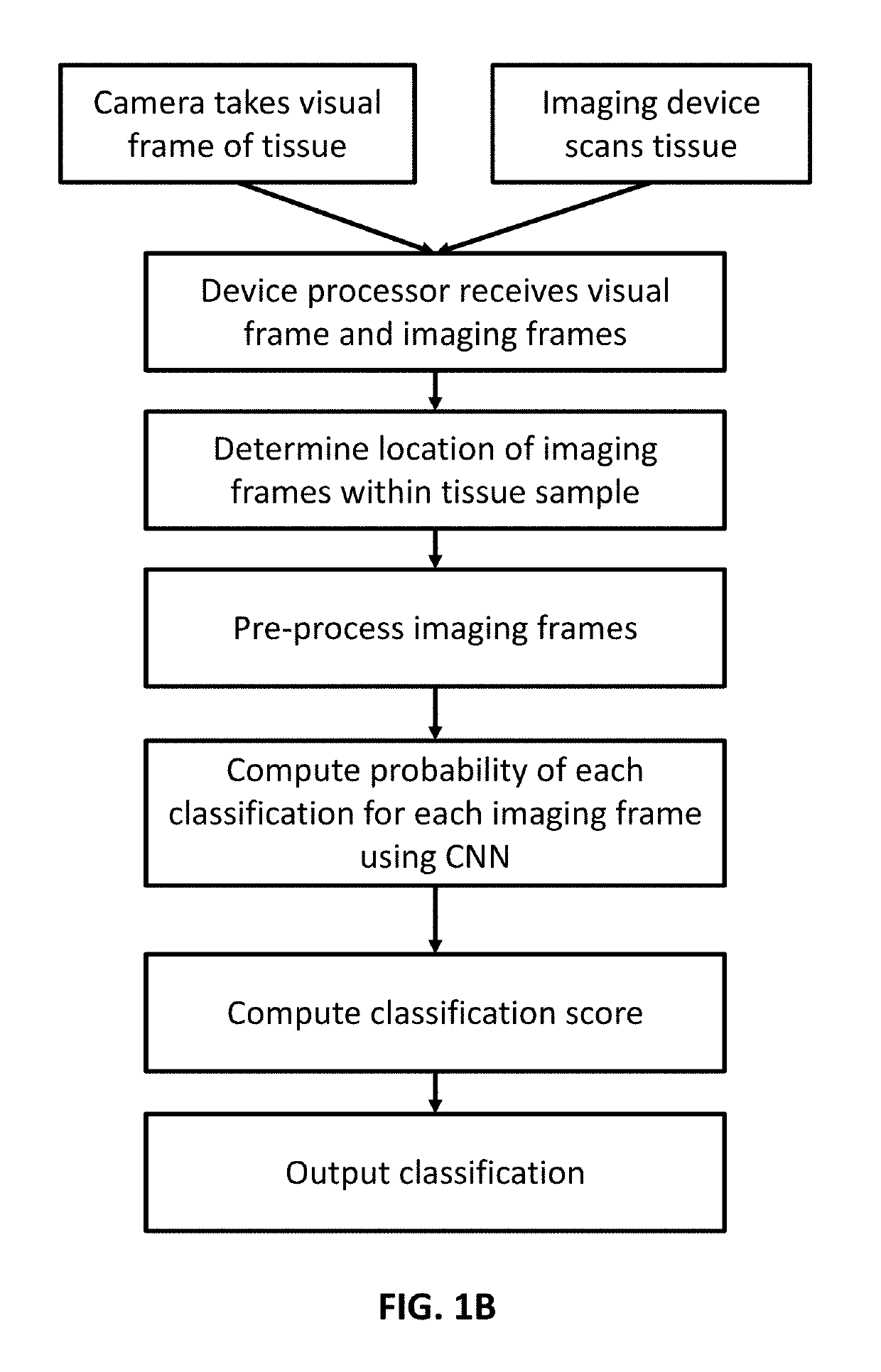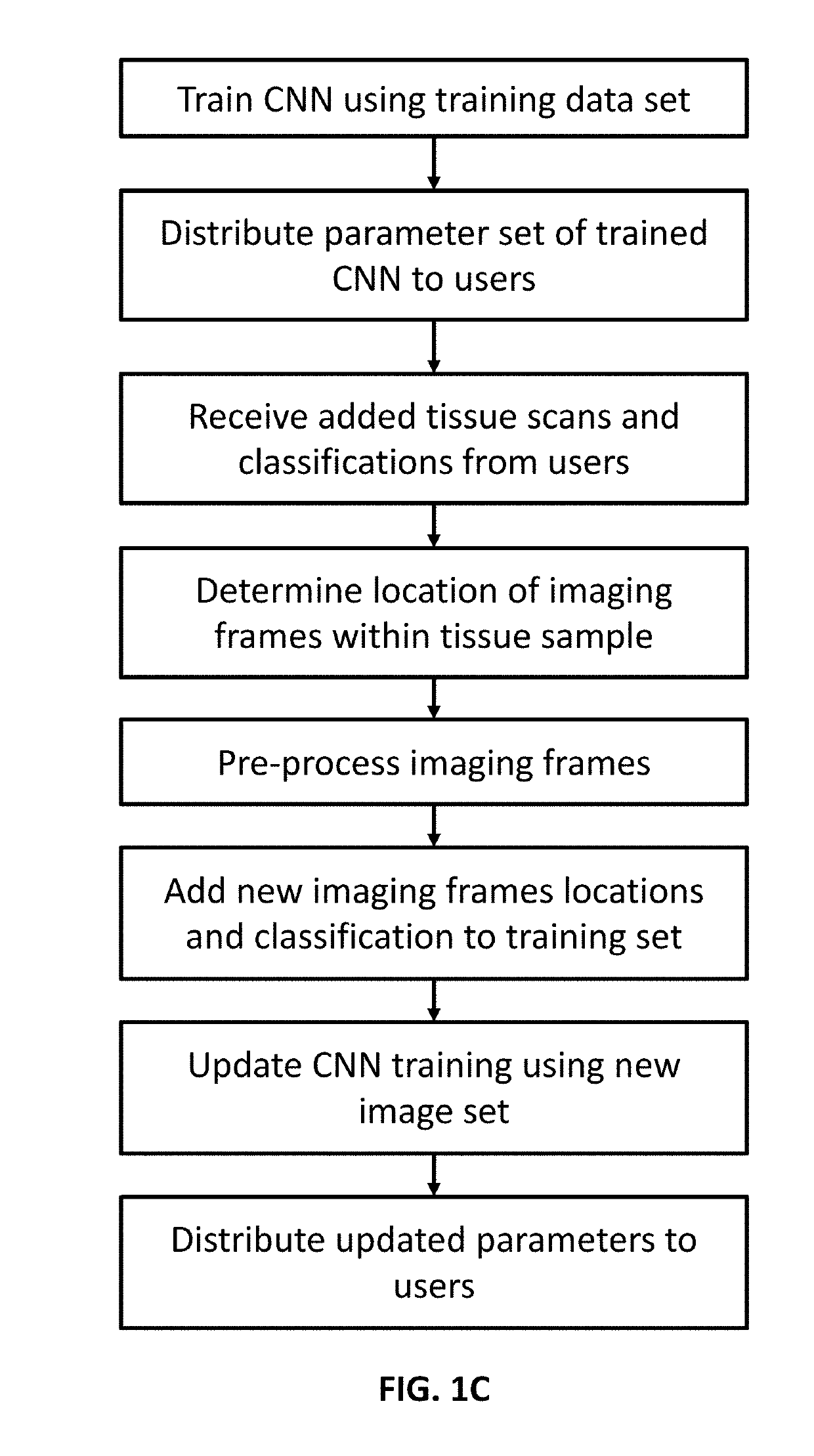Optical coherence tomography for cancer screening and triage
- Summary
- Abstract
- Description
- Claims
- Application Information
AI Technical Summary
Benefits of technology
Problems solved by technology
Method used
Image
Examples
example 1
[0158]The following is a non-limiting example of the present invention. It is to be understood that said example is not intended to limit the present invention in any way. Equivalents or substitutes are within the scope of the present invention.
Introduction
[0159]Incomplete surgical resection of head and neck cancer lesions is the most common cause of local cancer recurrence. Currently, surgeons rely on their experience of direct visualization, palpation, and pre-operative imaging to determine the extent of tissue resection. Intraoperative frozen section microscopy is used to assess presence of cancer at the surgical margin. It has been demonstrated that optical coherence tomography (OCT), a minimally invasive, non-ionizing near infrared mesoscopic imaging modality can resolve subsurface differences between normal and abnormal oral mucosa. However, previous work has utilized 2-D OCT imaging which is limited to the evaluation of a small regions of interest generated frame by frame. OC...
PUM
 Login to View More
Login to View More Abstract
Description
Claims
Application Information
 Login to View More
Login to View More - R&D
- Intellectual Property
- Life Sciences
- Materials
- Tech Scout
- Unparalleled Data Quality
- Higher Quality Content
- 60% Fewer Hallucinations
Browse by: Latest US Patents, China's latest patents, Technical Efficacy Thesaurus, Application Domain, Technology Topic, Popular Technical Reports.
© 2025 PatSnap. All rights reserved.Legal|Privacy policy|Modern Slavery Act Transparency Statement|Sitemap|About US| Contact US: help@patsnap.com



